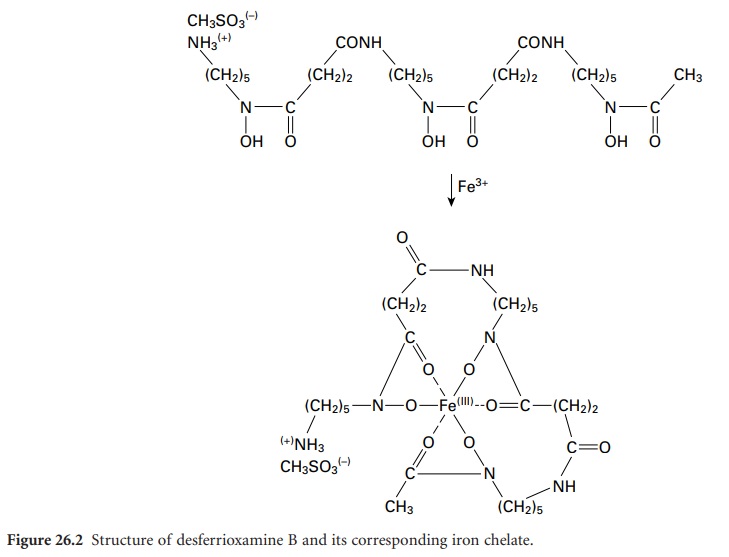Iron-Chelating Agents
| Home | | Pharmaceutical Microbiology | | Pharmaceutical Microbiology |Chapter: Pharmaceutical Microbiology : The Wider Contribution Of Microbiology To The Pharmaceutical Sciences
The growth of many microorganisms in iron-deficient growth media results in the secretion of low molecular weight iron-chelating agents called siderophores, which are usually phenolate or hydroxamate compounds.
IRON-CHELATING AGENTS
The growth of many microorganisms in
iron-deficient growth media results in the secretion of low molecular weight
iron-chelating agents called siderophores, which are usually phenolate or
hydroxamate compounds. The therapeutic potential of these compounds has
generated considerable interest. Uncomplicated iron deficiency can be treated
with oral preparations of iron(II) (ferrous) sulphate but such treatment is not
without hazard and iron salts remain a common cause of poisoning in children.
The accidental consumption of around 3 g of ferrous sulphate by a small child
leads to acidosis, coma and heart failure which, if untreated, are fatal.
Desferrioxamine B (Figure 26.2),
the deferrated form of a siderophore produced by Streptomyces pilosus, is a highly effective antidote
for the treatment of acute iron poisoning. Desferrioxamine owes its
effectiveness both to its high affinity for ferric iron (its binding constant
is in excess of 10 30) and because
the iron–desferrioxamine complex is highly water-soluble and is readily
excreted through the kidneys. In haemolytic anaemias such as thalassaemia,
desferrioxamine is used together with blood transfusions to maintain normal
blood levels of free iron and haemoglobin. Desferrioxamine is prepared as a
sterile powder for use as an injection, but it is also administered orally in
acute iron poisoning to remove unabsorbed iron from the gut.

Patients with iron overload disorders
treated with desferrioxamine may, however, have increased susceptibility to
infections. The important role played by iron availability during infections in
vertebrate hosts has only been recognized relatively recently. The ability of
the host to withhold growth-essential iron from microbial and, indeed,
neo-plastic invaders while retaining its own access to this metal has led to
suggestions that microbial iron chelators or their semisynthetic derivatives
may be of use in antimicrobial and anticancer chemotherapy. Preliminary work
has shown some encouraging results. The bacterial siderophores parabactin and
compound II secreted by Paracoccus denitrificans have
been shown to inhibit the growth of leukaemia cells in culture and in
experimental animals. They also appear capable of inhibiting the replication of
RNA viruses. Siderophores such as desferrioxamine may therefore find increasing
applications not only in the treatment of iron poisoning and iron-overloaded
disease states but also as chemotherapeutic agents.
Related Topics
